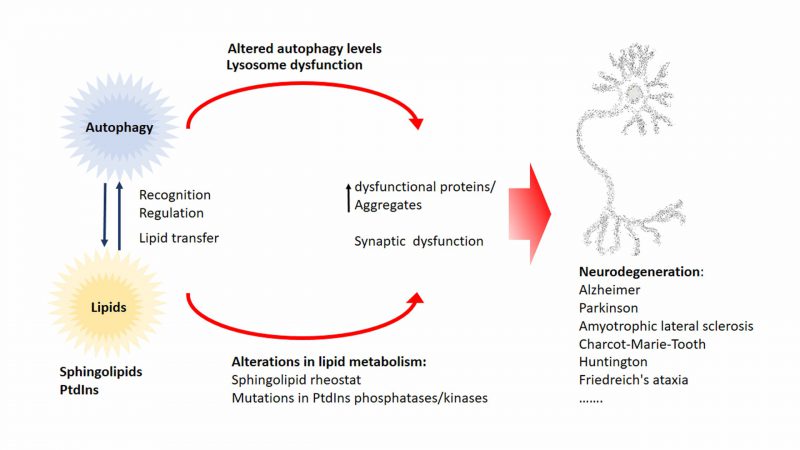Back to article: The role of lipids in autophagy and its implication in neurodegeneration
FIGURE 6: Proposed link of lipids in autophagy and neurodegeneration. There is a tight relationship between lipid metabolism and autophagy. Various sphingolipids function as bioactive lipids in the regulation of autophagy, while phosphoinositide phosphates (PtdIns) mainly function in the recruitment of autophagic factors. Autophagy is known to be an essential physiological mechanism to degrade dysfunctional and aggregate-prone proteins that are commonly accumulated in neurodegenerative disease. Changes in the sphingolipid rheostat (imbalance in the ratio between the concentrations of the apoptosis activator ceramide, and the anti-apoptotic mediator sphingosine-1-phosphate) have been implicated in many neurodegenerative diseases. Deregulation of phosphatidylinositol levels lead to neurodegeneration and various phosphatases and kinases targeting phosphatidylinositols have been found to be mutated in various neurodegenerative diseases.

